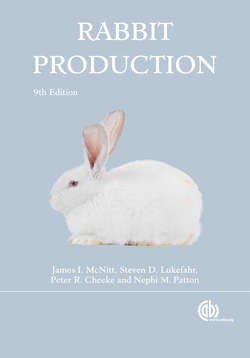Читать книгу Rabbit Production - James I McNitt - Страница 19
На сайте Литреса книга снята с продажи.
Europe
ОглавлениеWestern European countries, such as Italy, France, and Spain, have traditionally been major producers and consumers of rabbit meat. In past years, many of the peasant farmers of countries such as France kept a small herd of rabbits to produce meat for their own family’s consumption. Rabbit meat was an important part of the diet. As intensification of agriculture occurred and the size of farms increased, many of the former peasant farmers who moved to cities retained their enthusiasm for rabbit meat and purchased it at markets (Fig. 2.1). Rabbit farms were established to meet this demand. Thus, in several European countries, such as Italy and France, rabbit meat is a common and significant item of the diet, and a strong market exists for rabbit.
Fig. 2.1. Rabbits in a supermarket in France. Rabbits are often sold this way in Europe but cut-up, packaged carcasses are also popular. European consumers, like their North American counterparts, are less willing to cut up rabbits and poultry than they were in the past. (Courtesy of J.I. McNitt)
Since about 1950, the rabbit industry in Europe has changed dramatically. In 1950, most rabbits were produced on a backyard scale, with about six does per rabbitry. There were a very large number of very small producers. In common with other agricultural endeavors, continuous intensification of production has occurred (Fig. 2.2). While the number of rabbit raisers has decreased, the size of the average rabbitry has continued to increase to a level that the Europeans refer to as “industrial-scale broiler rabbit production.”
Fig. 2.2. An outdoor rabbitry near Barcelona, Spain, providing good ventilation and protection against rain. Note the dropping boards at the rear of the cages (bottom). The manure can be removed readily by hand or with a tractor. (Courtesy of P.R. Cheeke)
Modern European rabbit production is the most advanced in the world with the possible exception of China. This is especially true in the area of genetics. There are numerous private genetics companies that sell high-producing hybrid breeding stock to rabbit raisers. Generally the hybrids involve the New Zealand White and Californian breeds. The size of the European rabbit industry is sufficient to attract the serious and competitive attention of feed manufacturers, veterinary supply companies, equipment suppliers, and so on. Typically, rabbits are raised in hanging wire cages in environmentally controlled buildings and fed pelleted diets.
The prospects for the rabbit industry on the Continent appear bright. The people are sophisticated in their cuisine, and rabbit meat enjoys a high demand. Although production in France in the early 1980s dropped, rabbit production in Italy is expanding. The island nation of Malta in the Mediterranean Sea has one of the highest per capita rates of consumption of rabbit meat. Continued sophistication of rabbit production in Europe, with the use of hybrid breeding stock, environmentally controlled buildings, and innovative management, is foreseen.
At one time rabbit meat was widely consumed throughout Great Britain. Much of it was wild rabbit, harvested by hunters who earned their livelihood by shooting, trapping, or snaring rabbits. To some extent, this helped control the rabbit populations and kept crop losses at manageable levels. Wild rabbits were also raised in large fenced warrens managed by gamekeepers. This practice was discontinued because of the extensive ecological damage that occurred. In the 1950s, the viral disease myxomatosis was accidentally introduced into Britain, resulting in a spectacular kill of many of the wild rabbits. The repercussions of this on the domestic rabbit industry are still being felt. The sight of blind, deathly sick rabbits dying of “myxo” throughout the English countryside was repugnant to many people. The mention of rabbit brings to their minds the pathetic appearance of the diseased rabbits. Many British people who once enjoyed rabbit meat will no longer eat it. For this reason, and some stigma that rabbit is a “poor person’s meat,” the British rabbit industry is quite small. Vocal and sometimes violent animal rights extremists are a further impediment to rabbit production in England.
